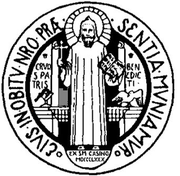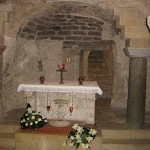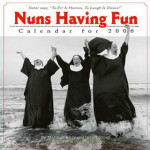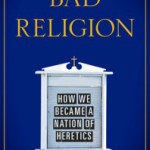 These are some of the questions I have received regarding pursing oblation.
These are some of the questions I have received regarding pursing oblation.
Q1: What is an oblate?
A1: I am not the best qualified person to answer that question. I will be spending the next year learning what it means to be a Benedictine Oblate. However, I will state my understanding at this beginning point. Many religious orders allow for oblates. An oblate is a person who does not take holy orders nor live at the monastery, but chooses to live, so much as it possible, according to the rule of the monastery out in the community. The person is an extension of the local monastery outside of the walls of the monastery. This relationship also allows the oblate the use of the spiritual formation resources within the monastery and the fraternity of other oblates. A Google search will provide you with much information; a talk with a local monk or nun will provide you with even more. Click here for the information provided by St. Paul’s Monastery.
Q2: Why are you choosing to become an oblate?
A2: The best answer to that would be to read the three posts which are my initial application to enter the oblate formation year, which are linked below. The short answer is that as a Christian I need to be intentional about my spiritual formation, and as a pastor sometimes my formation needs to come from outside the boundaries of my own local congregation. Also, as a student I have always been attracted to monastic traditions.
- Initial Oblate Application Part 1
- Initial Oblate Application Part 2
- Initial Oblate Application Part 3
Q3: Are you becoming Roman Catholic/Are you leaving The Wesleyan Church?
A3: No. An oblate (or at least a Benedictine Oblate) is not required to be a Roman Catholic. It was described to me at my initial meeting that “the order is older than the denominational divisions.” I was also informed of pastors from other denominations that have sought oblation (although becoming an oblate is certainly not limited to clergy). So, assuming I complete the oblation formation year, I will still be an ordained Wesleyan pastor, serving in Oakdale, and covenant member in good standing; I will simply be adding the OSB. Although not necessarily members of the Roman Catholic Church, it is my understanding that oblate names are kept on record at the Vatican.
Q4: Does The Wesleyan Church and your local church approve of you seeking to become a Benedictine Oblate?
A4: I would not pursue oblation without the support of my family, church and denomination. As for my local church, I proposed this to my leadership board before I started the application process, and it was their decision that anything I do to grow in my spiritual health is also good for the church. As for the denomination, I also sought and gained approval from my District Superintendent, requested and received support from a Wesley Seminary faculty member to accompany me on this journey, and looked up to see if this would go against anything in The Discipline of The Wesleyan Church. The closest relevant section in The Discipline is in the covenant membership commitments, which require:
“refraining from membership in secret societies and lodges which are oath bound, believing that the quasireligious nature of such organizations divides the Christian’s loyalty, their secret nature contravenes the Christian’s open witness and the secret nature of their oaths is repugnant to the Christian conscience. These prohibitions do not restrict membership in labor, civic or other organizations which do not contradict loyalty to Christ and the Church. When in these relationships Christian principles are violated, members shall be dealt with because of such violations and not because of the membership itself.” (265.4)
The Benedictines are neither “quasireligious,” “secret,” nor “contradict loyalty to Christ.”
Q5: What is the oblate vow?
A5: That depends. Different orders would have different vows, and as an oblate is tied to a specific monastery, different monasteries of the same tradition may have different vows. This was a concern to me, as the first vow I found online was:
I [NAME] offer myself to Almighty God through the Blessed Virgin Mary and our Holy Father Benedict as an Oblate of [NAME OF MONASTERY OR CONVENT] and promise to dedicate myself to the service of God and humanity according to the Rule of Saint Benedict in so far as my state in life permits.
I had doctrinal issues with the “through the Blessed Virgin Mary” phrase. However, at St. Paul’s Monastery the promise of commitment (specifically stated not to be a vow) is as follows:
I [NAME], offer myself to Almighty God, through St. Benedict and St. Scholastica, as an Oblate of the Sisters of St. Benedict of St. Paul’s Monastery. I promise to serve God and all people according to the Rule of St. Benedict, insofar as my life permits.
Q6: For how long will you be an oblate?
A6: Oblate formation lasts for one year, ending on Pentecost when the vow/commitment of oblation occurs. My understanding is that the commitment is for life, however, often the commitment is renewed each year.
Q7: What if I want to look into becoming an oblate?
A7: The by all means do so! It would seem to me that the first requirement would be find a monastery in or close to your community. Becoming an oblate is not joining an order in general, but a specific monastic community. If I did not have a monastery so close to my home, I probably would not have ever considered oblation. If the monastery close to my home was not Benedictine, I may not pursued oblation. I had started a relationship with St. Paul’s Monastery, through retreats, prayer, and community events they hosted before I ever heard the word “oblate,” so this was natural bridge I might cross.
Any other questions? Please ask them in the comments section below or tweet @pvtillman.






